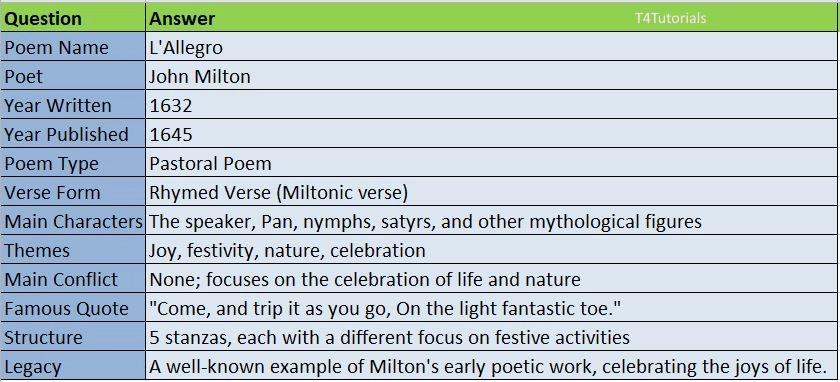Summary:
L’Allegro is a pastoral poem by John Milton that celebrates joy and happiness, contrasting with its companion poem, Il Penseroso, which explores themes of melancholy and contemplation. In L’Allegro, the speaker invites the reader to embrace a life filled with cheer, merriment, and lively activities. The poem depicts a world of nature, music, and festivity, with references to various mythological figures, such as nymphs, satyrs, and the god Pan. The speaker imagines a life full of music, dancing, and celebration, surrounded by beauty and youthful energy. The poem explores the idea that happiness is found in active enjoyment of the world, in contrast to the quieter, more reflective life presented in Il Penseroso. The imagery is rich with descriptions of landscapes, festivals, and joyous moments, emphasizing the pleasures of life and the natural world.

| Question | Answer |
| Poem Name | L’Allegro |
| Poet | John Milton |
| Year Written | 1632 |
| Year Published | 1645 |
| Poem Type | Pastoral Poem |
| Verse Form | Rhymed Verse (Miltonic verse) |
| Main Characters | The speaker, Pan, nymphs, satyrs, and other mythological figures |
| Themes | Joy, festivity, nature, celebration |
| Main Conflict | None; focuses on the celebration of life and nature |
| Famous Quote | “Come, and trip it as you go, On the light fantastic toe.” |
| Structure | 5 stanzas, each with a different focus on festive activities |
| Legacy | A well-known example of Milton’s early poetic work, celebrating the joys of life. |